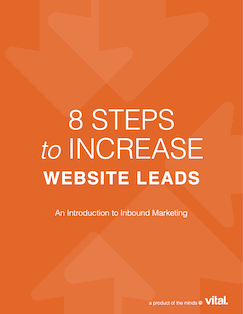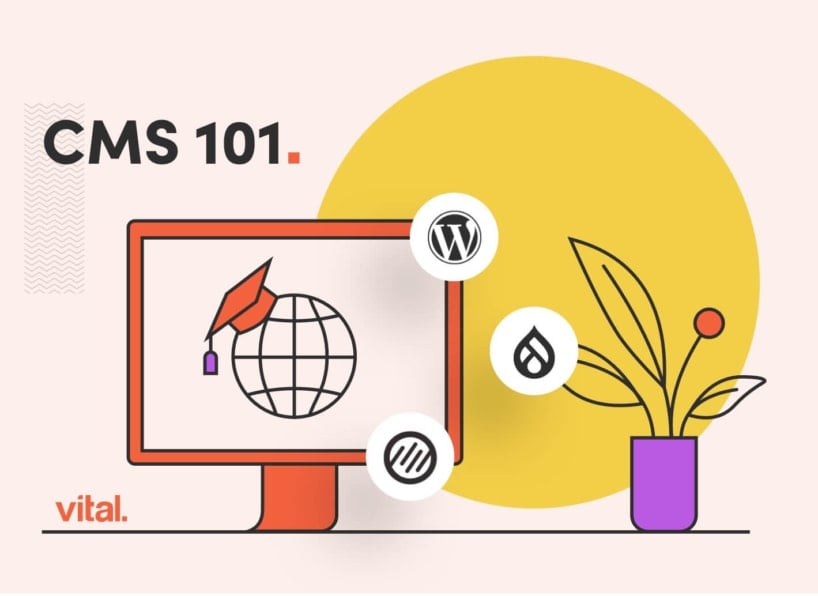Coming up with fresh campaign ideas can be a challenge. And if your university or college likes to change up their fundraising campaigns each year, it might feel like you’re running out of great ideas, but not to worry! We’ve come up with 32 university and college fundraising ideas and some additional tips to help you raise money for your institute of higher learning.
We have learned a lot through our work with several colleges and universities over various campaigns. We’ve previously written up our conversion rate optimization (CRO) and content strategy successes for alumni fundraising campaigns for the University of New Hampshire (UNH) in their #UNH50k Challenge and we’ve been involved for numerous years with #UNH603 Challenge. These large-scale fundraising campaigns involve strategy, creativity, and lots of hard work to hit their goals, but it all starts with the fundraising idea. So — what is YOUR school going to do for your next fundraiser?
Come up with a Fundraising Campaign Idea That Fits Your School
Before you come up with a strategy for executing a successful fundraising campaign for your college or university, you’ll first need a campaign idea. There are tons of great college fundraising ideas out there — and lots of ways that you can reimagine them to make your campaign unique to your school. You also need to figure out when to hold your fundraising campaign — and how it fits in to your fiscal year.
Here are a bunch of fundraising ideas to get your students, alums, development team, and other university supporters motivated to give:
Create a Social Media Strategy
Phone calls used to be one of the go-to options, but now, online is the way to go — and social media is now essential to a successful campaign. Some schools even have online-only fundraising event, so it’s important to have a polished, easy-to-use donation page and create hashtags that can be used on Twitter, Instagram, Facebook, and LinkedIn.
For example, the University of New Hampshire uses #UNH603 and Purdue University opts for #PurdueDayofGiving.
Here are some fun ways you can use social media to your fundraising advantage:
- Create signs with your hashtag and have students, faculty, staff, and alumni pose with them around campus. Post the pics to social media with a quote or two from those pictured. Remember: People like personal stories!
- Ask donors to provide their Twitter or Instagram handles when donating – and thank them publicly via social media!
- Donate a designated amount of money (or match funds) if a picture receives a certain number of likes or retweets.
- Even if you don’t hold competitions on social media, using it to promote your fundraising campaign is a must. Your posts should include pictures, appropriate hashtags, text that’s short and sweet, and a link that takes users directly to the donation page.
Enter to Win Large Giveaway
This is a fairly popular fundraising option. Find a big ticket item, preferably donated, that many potential donors would be excited to win, such as tickets to an event or an electronic item. Then, have a contest where donations equal an entry to win the giveaway prize.
Potential spins on the giveaway campaign fundraising idea:
- Every donation of any amount receives one entry to win New England Patriots tickets
- For every $100 you donate or raise, you are entered to win an Apple iPad
This type of challenge was part of a campaign we recently helped UNH with, the 603 Challenge, where they decided to base a number of incremental donor milestones (1st donor, 603rd donor, 862nd donor and 1234th donor) on their alumni office’s phone number, 1 (603) 862-1234.
As each milestone was hit, they celebrated and picked a random donor to win various prizes. As the campaign drew to a close, a new goal was announced: an additional 603 donors for the final day of the challenge, which was June 3 (6/03). This helped to give the campaign an extra surge that was ultimately successful in reaching well above the overall campaign goal.
Some fun milestone campaign ideas:
- If we hit X dollar amount, the university president or a college dean will film and release a cover of a popular song
- If the campaign hits a funding goal, additional funds will be donated by a challenger/matcher of funds
- If we hit a predetermined fundraising goal, we’ll host a large concert or event (perhaps with a university-connected entertainer) with all donors/alumni invited
Inter-Departmental/School Competitions
UNH took this competitive approach as part of another campaign we worked on: their UNH 50k campaign. Donors of any amount could vote for the school of their choice, and the top three schools with the most donors in the campaign got $25k, $15k and $10k of the total money raised. This is a great way to engage not only alumni of various schools, but also get the staff and students of each competing school involved in spreading the word to win!
Some fundraising ideas around school competition:
- College or department within the university with the most participating donors receives bonus funds
- Department with the most money raised receives a percentage of the money raised
- School with the most participating donors receives a percentage of the money raised
- Each department/school creates a fun video around a theme (musical theater spoof, online trend, mascot-themed) and donors vote to pick the winner; the winning video can receive bonus funds
Guessing games
Remember those competitions where you had to guess the amount of jelly beans or M&Ms in a jar? Well, take that germ of an idea and crank the scale up a bit for a fun fundraising event. Participants could pay $1, 5, or $10 per guess, and whoever wins (or is closest) can put the money that’s collected toward a specific department or program.
You can have people guess:
- How many textbooks your university store sold during the first week of classes
- Number of pieces of sports equipment in the campus rec facility
- How many pounds of a certain food is consumed in the dining hall per week
- Number of students who use the campus buses in a given time period
- The weight of all final papers from a certain class/course
- Guess the number of students who will get on the honor roll this year (projection for the future)
Naming rights
Normally this is something that is given away as part of a large capital campaign, but it could also be used in a university fundraising campaign. There are various things you can put up for naming, and various ways to determine who wins:
Things to Name:
- A room in a new facility
- New equipment in various buildings
- A bench, tree, sculpture, or other campus feature
- New mascot (of course, this would only apply if your mascot is undergoing a change or facelift)
Types of competitions:
- Donate to cast your vote for an option from a pre-approved list
- Head of the department that raises the most money wins the right to pick the name
- Group or school with the most donors wins rights to pick the name
Traditional – With a Twist
There are plenty of traditional fundraising models and putting a creative spin on them could reap great rewards for your college fundraising event.
- Have a bake sale in a well-trafficked spot on campus, such as the student union building.
- Car wash: Have your law department or forensics team negotiate pricing with each car
- Donate for a chance to take over the college, university, or department’s Twitter or Instagram accounts for the day
- Party: Throw a theme party (80s, underwater sea life, candy, Game of Thrones, etc.) and charge admission. Incorporate raffles and/or auctions at the party for extra fundraising power
- Host a high-end dinner: If your university has a culinary school, have them cater a fine dining experience. The music department could even provide the music!
- Raffle: Add online components such as tweeting the donation link to gain entries into the raffle, or creating curated YouTube playlist “mix tapes” as entries
Target Specific Audiences
In many cases, it can be beneficial to target your emails, mailers, or handouts to specific audiences. For example, you could send an email to recent grads, supporters of sports team, and alumni – but the messages should be tailored to each audience.
Focus Your Message
Whatever idea you pick to raise your funds, you should boil the campaign down to a very simple message. Can you explain your campaign in a brief sentence? It’s OK to have multiple aspects, but they shouldn’t detract from a simple, focused fundraising goal.
If you already have an existing, recurring fundraising initiative with a recognizable campaign name, it can help to build on that existing name recognition. We have seen that using the same hashtag across multiple-year events or campaigns is valuable. Once you have established the hashtag, people will then know which one to use in subsequent events. While we’ve learned this through our work with the New Hampshire Film Festival, it’s also applicable to a multiple-year ongoing campaigns, such as Boston College’s annual fund, #ForBC.
People respond to specific deadlines and specific targets…
— Scott Nichols, Boston University
However, launching a large capital campaign effort can go far in re-energizing your fundraising base. At Northeastern, the Empower campaign created a surge of interest and allowed them to surpass their annual goal.
“People respond to specific deadlines and specific targets,” Scott Nichols, senior vice president for development and alumni relations at Boston University told the Boston Globe in a recent article on the effectiveness of capital campaigns. Make sure your university’s fundraising campaign has a specific, time-sensitive, actionable goal.
Are you accepting ANY amount for your fundraising campaign? If so, make that abundantly clear — and use examples like $5 or $8 in your messaging to reinforce that any amount counts, and increase the overall donations by encouraging an odd amount like $8. Obama’s presidential campaign, famously, raised over 48% of its campaign funding from donors who each gave under $200 total in 2012.
Execution Matters
You’ve got your idea, and your focused message — now you need to get the word out in a thoughtful and strategic way.
We recommend recruiting a group of engaged and highly visible alum and/or students (outside of the development team running the campaign) to help spread the word about your campaign. They can also be alerted at key times throughout the campaign if a mid-campaign challenge or extra push is needed.
Plan the full rollout of your campaign — when you will announce, the length of the campaign, the method through which you’ll announce and who your key stakeholders are that will amplify and help spread the word. Gather pictures and video ahead of time and use graphic design elements to brand your visual assets with your university or college logo or hashtag.
Schedule social media posts with popular options such as Hootsuite, TweetDeck, or Sprout Social.
You’ll need some tactics designed, containing all the key info on the campaign and how people can give. Make sure you get input from all the key stakeholders who will want to be involved in this decision — and get their input up front.
Make sure the following vital information is on all campaign promotional materials:
- URL / hashtag for more info
- Date of campaign
- How to give
- Goal (monetary or engagement)
- Focused message (“why should I care?”)
Make it Super Easy to Give
Bottom line: People are busy — and you certainly aren’t the only one asking for money. Once you have your bright idea and a creative execution, you should make it easy for people to donate.
Here are some key considerations:
Online
This is the easiest and most popular way for you to get the maximum amount of funds raised for your campaign. Emails to alumni and current students can provide details and stats about what the funds will be used for, or they can tell one particular student’s story. Either way, it’s important to include a link that takes readers directly to a donation page.
You MUST have an online option for people to give as soon as they hear about your campaign, or you risk missing a majority of people who may want to donate but can’t work their busy schedules around your event. Consider using the SharePoint calendar to schedule your events and roundups beforehand so that everyone can properly attend.
Text
This is another incredibly easy way for people to give. If you can set up a Text-to-Donate option, your engagement will undoubtedly increase. Talk to a service provider to see what the cost would be and if this option makes sense for a campaign of your scope and scale.
Credit Card Option
If you’re raising money at an event in person, do not expect everyone to be carrying cash. According to Formstack, only 41% of American adults say they regularly carry cash. Square card readers and PayPal fees are popular options, so there’s no reason to not have a credit card option at your booth or event headquarters.
Thank Your Donors
Online donations should generate an auto reply to donors, but it’s important to thank everyone who donates after the campaign is over. Personalize your message by sending thank-you letters complete with pictures from your event (or a video if your thank-you message is digital!), according to Donor Search.
Besides being a polite gesture, sending a thank-you note lets donors know you really do appreciate their contribution. And who knows? That may make them more inclined to donate again in the future.
We hope these college fundraising tips have sparked some creative ideas for your college or university’s next campaign. If you have any questions about how to amplify your campaign’s reach, please drop us a line or catch us on Twitter.






